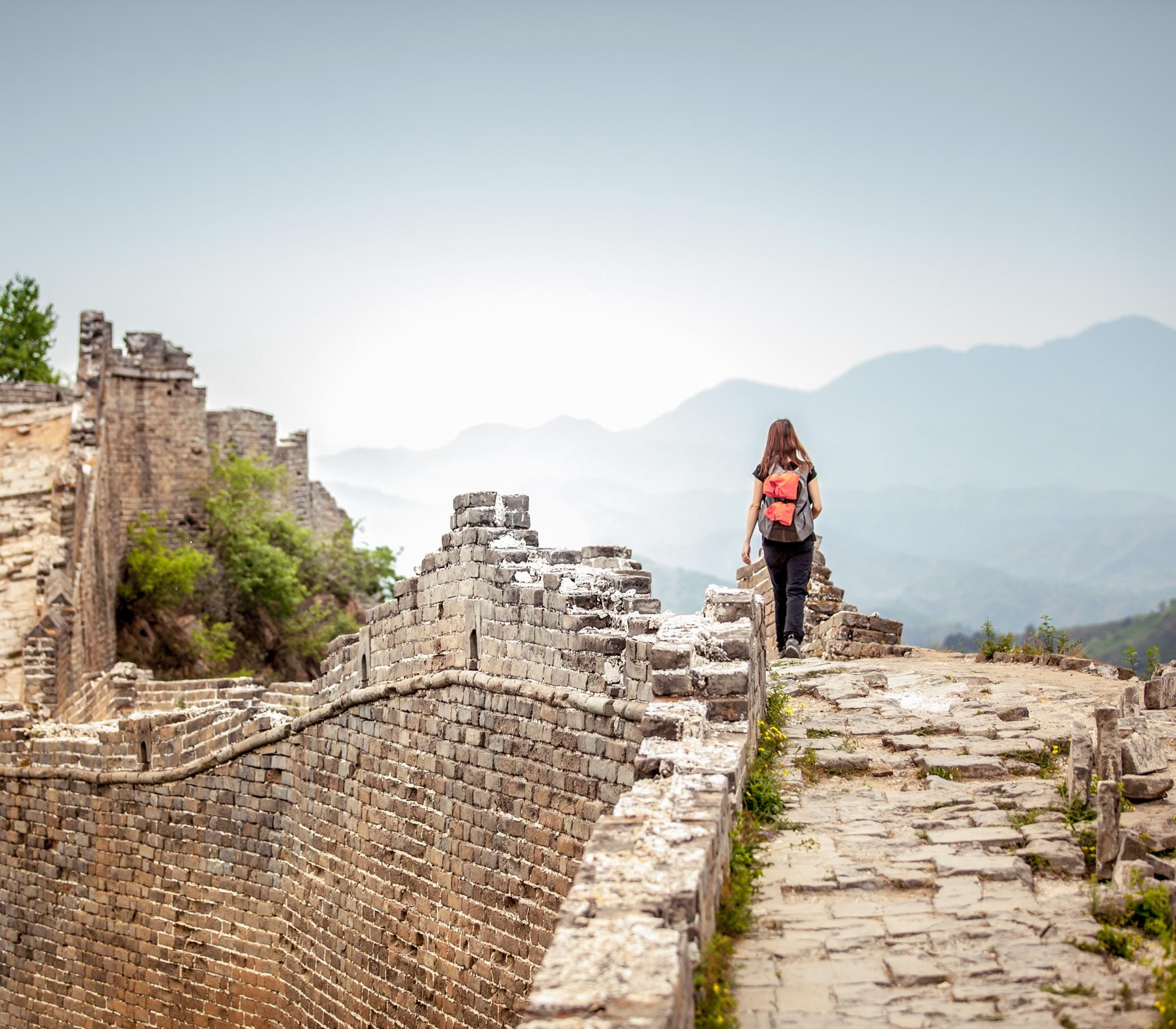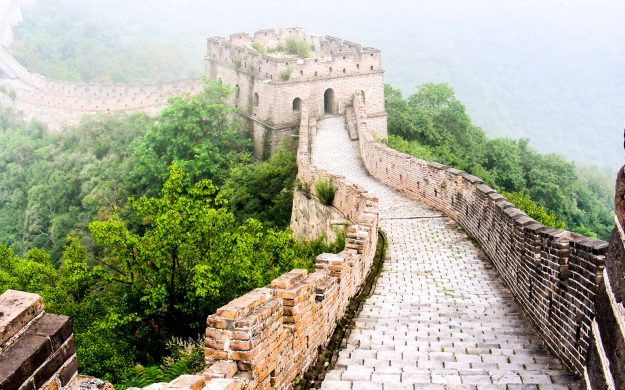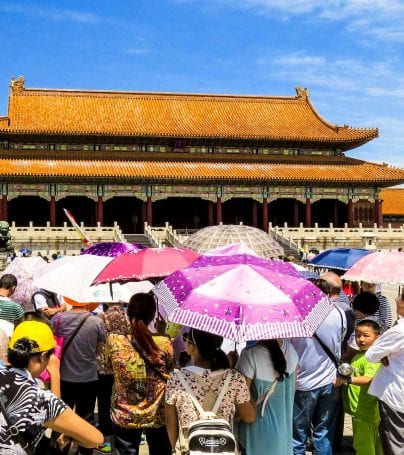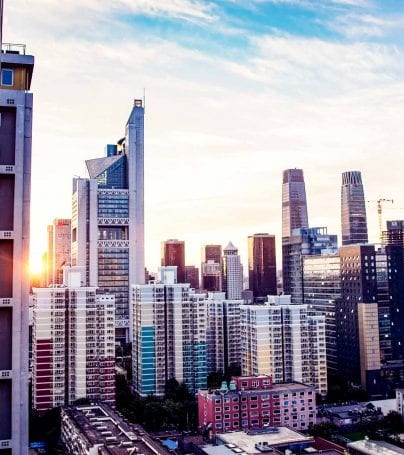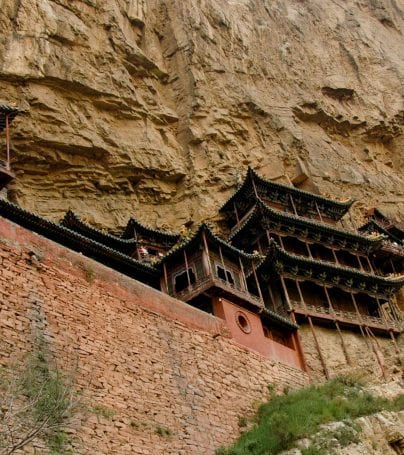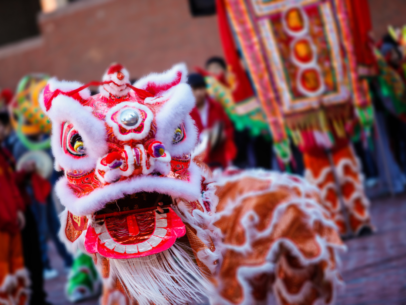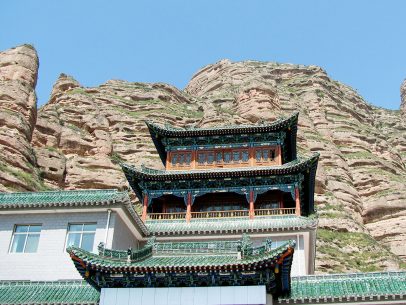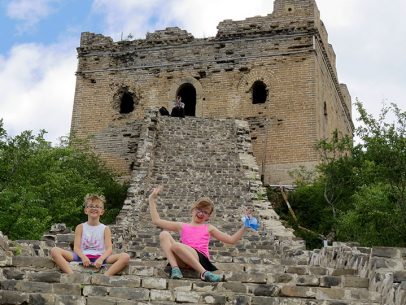Great Wall of China Adventure Tours
The Great Wall of China is a Chinese fortification built from 3rd century BC until the beginning of the 17th century, in order to protect the various dynasties from raids by Mongol, Turkic, and other nomadic tribes coming from areas in modern-day Mongolia and Manchuria. Several walls were built since the 3rd century BC, the most famous being the Great Wall of China built between 220 BC and 200 BC by the first Emperor of China, Qin Shi Huangdi (this was located much further north than the current Great Wall of China built during the Ming Dynasty, and little of it remains). The Wall stretches over a formidable 6,352 km (3,948 miles), from Shanhai Pass on the Bohai Sea in the east, at the limit between “China proper” and Manchuria, to Lop Nur in the southeastern portion of Xinjiang Uygur Autonomous Region. Along most of its arc, it roughly delineates the border between North China and Inner Mongolia.
History of the Great Wall of China
A defensive wall on the northern border was built and maintained by several dynasties at different times in Chinese history. Its purpose was to defend the China mainland from Mongol and Turkic nomads. There have been five major walls:
- 208 BC (Qin Dynasty)
- 1st century BC (Han Dynasty)
- 7th century CE (Sui Dynasty)
- 1138 – 1198 (Five Dynasties and Ten Kingdoms Period)
- 1368 – 1640 (from Hongwu Emperor until Wanli Emperor of the Ming Dynasty)
The first major wall was built during the reign of the first Emperor of China, Qin Shi Huang. This wall was not constructed as a single endeavor, but was mostly the product of joining several regional walls built by the Warring States. The walls that were linked together at this time consisted of rammed earth with watch towers built at regular intervals. It was located much further north than the current Great Wall with its eastern end at modern day North Korea. Very little of this first wall remains – photos reveal a low, long mound.
The government ordered people to work on the wall, and workers were under perpetual danger of being attacked by brigands. Because many people died while building the wall, it has obtained the gruesome title, “longest cemetery on Earth” or “the long graveyard”. Possibly as many as one million workers died building the wall, though the true numbers cannot be determined now. The people that died were not buried in the wall, since decomposing bodies would have weakened structure.
The later long walls built by the Han, the Sui, and the Ten Kingdoms period were also built along the same design. They were made of rammed earth with multi-story watch towers built every few miles. These walls have also largely vanished into the surrounding landscape, eroded away by wind and rain.
In military terms, these rules were more frontier demarcations than defensive fortifications of worth. Certainly Chinese military strategy did not revolve around holding the wall; instead, it was the cities themselves that were fortified.
The Great Wall which tourists visit today was built during the Ming Dynasty, starting around the year 1368 and lasting till around 1640. Work on the wall started as soon as the Ming took control of China but initially, walls were not the Ming’s preferred response to raids out of the north. That attitude began to change in response to the Ming’s inablilty to defeat the Oirat war leader Esen Taiji in the period 1449 to 1454. A huge Ming Dynasty army with the Zhengtong Emperor at its head was anihilated in battle and the Emperor himself held hostage in 1449.
Apparently the real focus on wall building started as a result of Altan Khan’s siege of Beijing which took place one hundred years later in 1550. The Ming, faced with the choice of trying to defeat the Mongols with direct military force, chose instead to build a massive defensive barrier to protect China. As a result, most of the Ming Great Wall was built in the period 1560 to 1640. This new wall was built on a grand scale with longer lasting materials (solid stone used for the sides and the top of the Wall) than any wall built before.
The Ming Dynasty Great Wall starts on the eastern end at Shanhai Pass, near Qinhuangdao, in Hebei Province, next to Bohai Gulf. Spanning nine provinces and 100 counties, the final 500 kilometers have all but turned to rubble, and today it ends on the western end at the historic site of Jiayuguan Pass (also called Jiayu Pass) (???), located in northwest Gansu Province at the limit of the Gobi Desert and the oases of the Silk Road. Jiayuguan Pass was intended to greet travelers along the Silk Road. Even though The Great Wall ends at Jiayu Pass, there are many watchtowers (??? f?ng hu? tái) extending beyond Jiayu Pass along the Silk Road. These towers communicated by smoke to signal invasion.
In 1644, the Kokes Manchus crossed the Wall by convincing an important general Wu Sangui to open the gates of Shanhai Pass and allow the Manchus to cross. Legend has it that it took three days for the Manchu armies to pass. After the Manchu conquered China, the Wall was of no strategic value, mainly because the Manchu extended their political control far to the north. See more on the Manchu Dynasty.
The last great wall of the Ming really was a military fortification of some strength. However, military historians are generally dismissive of the net value of this great wall. It was astonishingly expensive to build, maintain and garrison. The money the Ming spent on the wall could have been spent on other military capabilities such as European style artillery or muskets. The fact remains that the great wall was of no help at all in preventing the Ming Dynasty’s fall.
Before the Second Sino-Japanese War, as a result of the failed defense of the Great Wall, the Great Wall became a de facto border between the Republic of China and Manchukuo.
Condition
While some portions near tourist centers have been preserved and even reconstructed, in many locations the Wall is in disrepair, serving as a playground for some villages and a source of stones to rebuild houses and roads. Sections of the Wall are also prone to graffiti. Parts have been destroyed because the Wall is in the way of construction sites. Intact or repaired portions of the Wall near developed tourist areas are often plagued with hawkers of tourist kitsch. The Gobi Desert is also encroaching on the wall in some places. Some estimates say that only 20% of the wall is in a good condition. In 2005, pictures of a rave party on the Great Wall surfaced in the Chinese media.
Watchtowers and Barracks
The wall is complemented by defensive fighting stations, to which wall defenders may retreat if overwhelmed. Each tower has unique and restricted stairways and entries to confuse attackers. Barracks and administrative centers are located at larger intervals.
Materials
The materials used are those available near the wall itself. Near Beijing the wall is constructed from quarried limestone blocks. In other locations it may be quarried granite or fired brick. Where such materials are used, two finished walls are erected with packed earth and rubble fill placed in between with a final paving to form a single unit. In some areas the blocks were cemented with a mixture of sticky rice and egg whites.
In the extreme western desert locations, where good materials are scarce, the wall was constructed from dirt rammed between rough wood tied together with woven mats.
Recognition
The Great Wall of China in 1907, as photographed by Herbert Ponting. Over the centuries, there had been a number of attempts to build some sort of fortification or earthworks along this route, but the wall that appears here was built during the Ming Dynasty (1368-1644).
The Wall is included in lists of the “Seven Medieval Wonders of the World” but was of course not one of the classical “Seven Wonders of the World” recognized by the ancient Greeks. The Wall was made a UNESCO World Heritage Site in 1987.
From Outer Space
There is a long standing disagreement about how visible the wall is from space.
Richard Halliburton’s 1938 book Second Book of Marvels said the Great Wall is the only man-made object visible from the moon, and a “Ripley’s Believe It or Not” cartoon from the same decade makes a similar claim. This popular belief has persisted, assuming urban legend status, sometimes even entering school textbooks. Arthur Waldron, author of the single most authoritative history of the Great Wall written in any language, has speculated that the belief about the Great Wall’s visibility from outer space might go all the way back to the fascination with the “canals” some people during the late nineteenth century believed to exist on Mars (The logic was strange and simple: If Earthlings can see the Martians’ canals, the Martians might be able to see the Great Wall). But in fact, the Great Wall simply cannot be seen by the unaided eye from the distance of the moon, much less that of Mars.
The distance from Earth to the moon is about a thousand times greater than the distance from the earth to a spacecraft in near-earth orbit. If the Great Wall were visible from the moon, it would be easy to see from near-earth orbit. In fact, from near-Earth orbit, it is barely visible, and only under nearly perfect conditions, and it is no more conspicuous than many other manmade objects.
One shuttle astronaut reported that “we can see things as small as airport runways [but] the Great Wall is almost invisible from only 180 miles (290 km) up.” Astronaut William Pogue thought he had seen it from Skylab but discovered he was actually looking at the Grand Canal of China near Beijing. He spotted the Great Wall with binoculars, but said that “it wasn’t visible to the unaided eye.” An Apollo astronaut said no human structures were visible at a distance of a few thousand miles. U.S Senator Jake Garn claimed to be able to see the Great Wall with the naked eye from a space shuttle orbit in the early 1980s, but his claim has been disputed by several professional U.S. astronauts. Chinese astronaut Yang Liwei said he couldn’t see it at all.
Veteran U.S. astronaut Gene Cernan has stated: “At Earth orbit of 160 km to 320 km high, the Great Wall of China is, indeed, visible to the naked eye.” Ed Lu, Expedition 7 Science Officer aboard the International Space Station, adds that, “…it’s less visible than a lot of other objects. And you have to know where to look.”
Neil Armstrong also stated: “We could see continents (on Apollo 11), could see Greenland. It stands out, just like it does on the globe in your library, all white. Antarctica we couldn’t see because there were clouds over Antarctica. Africa was quite visible, and we could see sun glint off a lake. It might have been Lake Chad. I’m not certain which lake it was, but we could catch that reflection, sun reflection…. But I do not believe that, at least with my eyes, there would be any man-made object that I could see. I have not yet found somebody who has told me they’ve seen the Wall of China from Earth orbit. I’m not going to say there aren’t people, but I personally haven’t talked to them. I’ve asked various people, particularly Shuttle guys, that have been many orbits around China in the daytime, and the ones I’ve talked to didn’t see it.
Leroy Chiao, a Chinese American astronaut, took a photograph from the International Space Station that shows the wall. It was so indistinct that the photographer was not certain he had actually captured it. Based on the photograph, the state-run China Daily newspaper concluded that the Great Wall can be seen from space with the naked eye, under favorable viewing conditions, if one knows exactly where to look.
These inconsistent results suggest the visibility of the Great Wall depends greatly on the seeing conditions, and also the direction of the light (oblique lighting increasing the angular size of the Wall through the addition of a shadow to the physical width of the Wall). Features on the moon that are dramatically visible at times can be undetectable on others, due to changes in lighting direction. The Great Wall is only a few meters wide — sized similar to highways and airport runways — and is about the same color as the soil surrounding it.
Customize Your Dream Adventure
We are here to help craft tailor-made adventures for individuals, couples, families, and groups of explorers.
